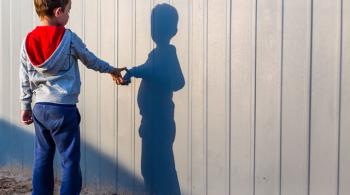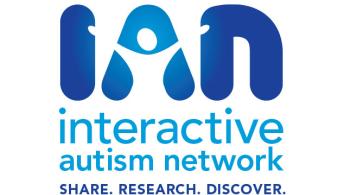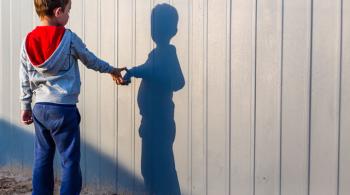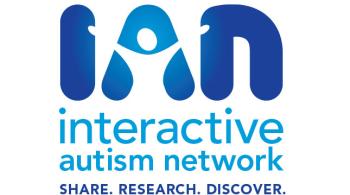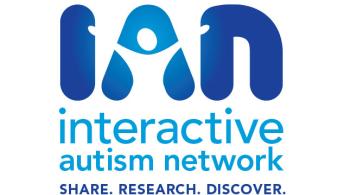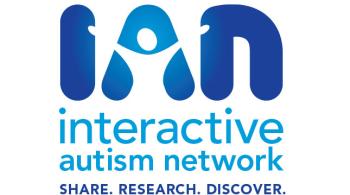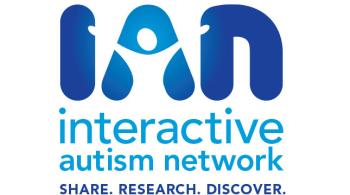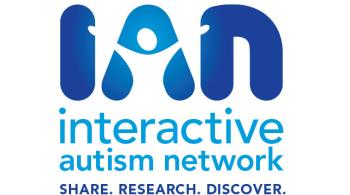Sensory-based approaches to treating Autism Spectrum Disorders (ASDs) concentrate on correcting or improving the body’s abnormal response to external stimuli.
We all experience the world through our senses— sight, smell, touch, taste and sound. We interpret and react to our surroundings based on information the brain receives from our eyes, nose, skin, tongue, and ears. For the entire time we are awake, these varied sensory organs are continuously sending information to the brain. For those of us without an ASD, the brain filters this constant flow of incoming sensory messages and is able to ignore those that are not relevant at the time.
For example, as I sit at my computer and type, I am only aware of the words appearing on the screen and my fingertips stroking the keys on the keyboard. However, if I allow myself to focus on all incoming sensory messages, I can also hear typing sounds from my colleague's office, a vehicle passing by, and the low hum of the office heater. I can see the stacks of papers piled on my desk and streaks of sunlight coming through the window blinds. I can feel my clothing against my skin, and even taste the last drops of my morning coffee. Fortunately, for most the day, I am completely unaware of these other sources of sensory information. I am able to concentrate just on the work in front of me.
For many individuals with an ASD, however, this necessary filtering of unimportant sensory input doesn't happen. The streaks of light coming through the window blinds may be mesmerizing, while the low hum of the heater may be unbearably irritating. This inability to block out normal "background" stimuli sometimes produces a state of "sensory overload" in individuals with an ASD, disrupting their ability to focus and concentrate, which are necessary skills for learning and communicating. The difficulty is not with one specific sense, but with how multiple senses are experienced all at once. 1
There are a variety of therapies that attempt to help individuals with ASDs by addressing not only these sensory issues, but the impact they have on the brain. Two of the most well known of these are Sensory Integration Therapy and Auditory Integration Therapy.
Sensory Integration Therapy
In the 1970s, Jean Ayres, Ph.D., an occupational therapist and licensed clinical psychologist, developed a theory she called Sensory Integration (SI). Observing children with learning disabilities, she noticed that they often experience motor, sensory, and perceptual difficulties, and began to suspect that they were unable to properly process and integrate sensory information. "She theorized," write two current day researchers, "that the behavior and learning problems were, in part, due to faulty integration of sensory information and inability of higher centers to modulate and regulate lower brain sensory-motor centers." 2
This theory is based on the belief that you can change the brain by changing experience. If a person has poor sensory integration -- which then impacts the ability to function and learn -- you can provide sensory experiences that will improve not only sensory integration itself, but functioning overall.
Individuals with ASDs are known to experience a vast array of sensory difficulties, 3,4,5,6 and these seem part of an overall failure to take in the social and material world in expected ways. Perhaps it is therefore not surprising that one online survey showed Sensory Integration Therapy to be the third most common form of treatment used by parents of children with ASDs, with 38.2% saying they are currently using the treatment and 33.2% saying they have used it in the past. 7 Occupational Therapists (OTs) have become the key providers of such treatments. (In one survey, 99% of OTs were using sensory integration methods with clients "on the spectrum." 8)
It is not easy to disentangle SI theory from SI therapy, for they have developed in parallel. In brief, children are evaluated to see if they are hypo- or hyper-sensitive -- that is under- or over- sensitive -- and to what stimuli: noise, touch, sight, smell, taste. Also addressed are propioceptive and vestibular senses. (The propioceptive sense involves a person’s own awareness of what their muscles and joints are doing, that is, of where they are in space and how they are moving. The vestibular sense, which is related to the inner-ear, involves a person’s awareness of movement, head position, balance, and coordination.) An individualized program may include activities as diverse as drawing with a finger in smooth sand, swinging on a rope and jumping into a ball-pit, or crawling through a tunnel. The activity is matched to the child’s sensory needs, with an eye to creating achievable “sensory challenges” based in play. 9 Again, it is not just specific sensory sensitivities or cravings that are supposed to be addressed, but the integration of all senses, as well as overall functioning.
There is as yet little evidence-based research to conclusively support the practice of SI Therapy. 10,11 Nevertheless, based on the experience of parents and practitioners alike, it is widely used to treat individuals with ASDs. Expanded research to determine its effectiveness is underway. 12
Auditory Integration Training
Auditory Integration Training (AIT), which was developed in France in 1982, involves treating a person with an ASD through their sense of hearing. In AIT, musical sounds are washed through a filtering apparatus that alters them, emphasizing some tones and reducing the intensity of others, while the person receiving the treatment listens through high quality headphones. In theory, the brain has to work to re-integrate the filtered sounds, and becomes better connected and able to integrate in every way through this process. The hope is that the treatment will not merely lessen hypersensitivity to sound, but will result in an overall improvement in behavior and attention. Although there are several variations of AIT therapy, it generally involves a ten day course of twice-a-day half hour treatments. 13
A recent internet survey of parents of children with ASDs showed that 9.1% of them were using AIT, while 21% had used it sometime in the past. 14 AIT is a treatment which has enjoyed great anecdotal support, starting with a 1991 book in which a mother described how her daughter –diagnosed with autism and schizophrenia—was “cured” via AIT. 15 Unfortunately, actual studies of the treatment have not yielded encouraging results. Only a handful of studies have been well designed enough to be included in evaluations by experts. The largest of these studies showed AIT had no benefit at all. Three other studies yielded somewhat positive results, but these findings were weakened by the fact that a) the studies were very small and b) inappriopriately applied the measure they used to gauge "improvement." 16 “In the case of AIT,” wrote one reviewer, “there is no, or at best equivocal, support for this intervention approach based on the available controlled studies.” 17
Well designed research, conducted on a larger scale and using well accepted outcome measures, is needed to determine if AIT is ever truly beneficial.
References
- Iarocci, G., & McDonald, J. (2006). Sensory integration and the perceptual experience of persons with autism. Journal of Autism and Developmental Disorders, 36(1), 77-90.
- Schaaf, R.C., & Miller, L.J. (2005). Occupational therapy using a sensory integrative approach for children with developmental disabilities. Mental Retardation and Developmental Disabilities Research Reviews 11, 143-148.
- Baranek, G.T., Parham, L.D., & Bodfish, J.W. (2005). Sensory and motor features in autism: Assessment and intervention. In F. Volkmar et al. (Eds.), Handbook of Autism and Pervasive Developmental Disorders (pp.831-857). Hoboken, NJ: John Wiley & Sons.
- Kientz, M.A., & Dunn. W. (1997) A comparison of the performance of children with and without autism on the Sensory Profile. American Journal of Occupational Therapy, 51(7), 530-537.
- Rogers, S.J., Hepburn, S., & Wehner, E. (2003). Parent reports of sensory symptoms in toddlers with autism and those with other developmental disorders. Journal of Autism and Developmental Disorders, 33(6), 631-642.
- Watling, R., Deitz, J., & White, O. (2001). Comparison of Sensory Profile scores of young children with and without autism spectrum disorders. American Journal of Occupational Therapy, 55(4), 416-423.
- Green, V.A., Pituch, K.A., Itchon, J., Choi, A., O’Reilly, M, & Sigafoos, J. (2006). Internet survey of treatments used by parents of children with autism. Research in Developmental Disabilities, 27, 70-84.
- Watling, R., Deitz, J., Kanny, E.M., McLaughlin, J.F. (1999). Current practice of occupational therapy for children with autism. American Journal of Occupational Therapy, 53(5), 498-505.
- Schaaf, R.C., & Miller, L.J. (2005). Occupational therapy using a sensory integrative approach for children with developmental disabilities. Mental Retardation and Developmental Disabilities Research Reviews 11, 143-148.
- Baranek, G.T. (2002). Efficacy of sensory and motor interventions for children with autism. Journal of Autism and Developmental Disorders, 32(5), 397-422.
- Rogers, S.J., & Ozonoff, S. (2005). Annotation: What do we know about sensory dysfunction in autism? A critical review of the empirical evidence. Journal of Child Psychology and Psychiatry, 46(12), 1255-1268.
- Schaaf, R.C., & Miller, L.J. (2005). Occupational therapy using a sensory integrative approach for children with developmental disabilities. Mental Retardation and Developmental Disabilities Research Reviews 11, 143-148.
- Sinha, Y., Silove, N., Wheeler, D., & Williams, K. (2004). Auditory integration training and other sound therapies for autism spectrum disorders, Cochrane Database of Systematic Reviews, Issue 1.Art. No.: CD003681. DOI: 10.1002/14651858.CD003681.pub2.
- Green, V.A., Pituch, K.A., Itchon, J., Choi, A., O’Reilly, M, & Sigafoos, J. (2006). Internet survey of treatments used by parents of children with autism. Research in Developmental Disabilities, 27, 70-84.
- Stehli, A. (1991). The Sound of a Miracle: A Child’s Triumph Over Autism. New York: Doubleday.
- Sinha, Y., Silove, N., Wheeler, D., & Williams, K. (2004). Auditory integration training and other sound therapies for autism spectrum disorders, Cochrane Database of Systematic Reviews, Issue 1.Art. No.: CD003681. DOI: 10.1002/14651858.CD003681.pub2.
- Dawson, G., & Watling, R. (2000). Interventions to facilitate auditory, visual, and motor integration in autism: A review of the evidence. Journal of Autism and Developmental Disorders, 30(5), 415-421. (pg. 419)

